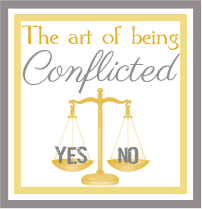 |
| Was there a time that bad floor plans redefined cultures? |
In the case of Mr. Ruhlman, he tells the story of why he moved back to his hometown of Cleveland from New York City to buy a 100 year old fixer-upper. The book basically is a memoir of how he, his wife, along with their two small children searched for an historic home, lived in the attic for the better part of a year during renovations and the reasons he yearned to do this and why his wife didn't. He admits that he felt something akin to a fish swimming upriver to it's native spawning grounds to get back to the place he grew up in.
Michael had grown up in one home for the 18 years before going off to school, while his wife had moved numerous times with her parents growing up. She hadn't really connected to a place that she considered as "her home town". Clearly these two have different visions of what constitutes a home. In their case, he yearned for a feeling of inclusion to a community. He needed to know the neighbors, be near extended family, and be part of the continuum of his history into the future. His wife wanted a decent house that met their needs and she would of preferred it to be in New York City. She conceded that Cleveland would be a good place to raise their kids.
There often seems to be a huge divide between how people connect to a residence. Some people depend on their home to be their sanctuary, while others merely consider it a stop gap from being caught in the rain. Being emotionally invested to a home is inherently different that residing in house where the scope of your commitment is calling it your "current address".
Often, I can get a sense of how emotionally connected a buyer or seller is to their home within a very short span of time. There are times, however, that people are hard pressed to separate the nostalgia and sentiment of their house from the financial and the investment potential. Most buyers and sellers can claim they are being objective but nearly every sales/purchase transaction has at least some emotional component causing someone to emotionally implode.
Removing outwardly signs of emotional attachments from peoples homes seems to be a trend. When I started real estate, for example, people cleaned their homes, put away the clutter, made some repairs and such to get their home ready to market. Then a couple of decades ago, STAGING happened. At that point people started redecorating their homes prior to selling them so they could get top dollar. To accomplish this they were more concerned with the aesthetics of their house than either the functionality or the preventative maintenance. At that point the flow of the floor plan garnered the same amount of value at the quality of the countertops or the size of the master closet. This process of making homes more impersonal added the extra level of removing personal belonging and any type of personal memorabilia. Photos became verboten.
Yes..the pendulum swung even farther. Now homes are being stripped down to the bones prior to sale because there is a trend that says that buyers need to imagine their own things in a home so the seller must clear out any sign of personalize. Pictures on the wall...heaven forbid! Rooms painted anything other that subtle, trendy colors, don't even think about it! Even furnishings are being sent to storage to make "rooms appear bigger". All of this, of course, is subjective.
Beyond the point of buying or selling though...there seems to be the nesters, investors, and dissenters
, . Sometimes people are both. The nesters of the world, love their homes and continually make them "their own". Now "making them their own" is unique to every person. To a minimalist it may be barren looking to most of us or to a hoarder it may be suffocating to most of us but then it's not really OUR home is it? They don't care if their home appeals to the masses. The investors are more cautious and want their home to appeal to the majority of potential buyers. They make improvements based on possible future buyers than doing whatever they REALLY would love to do to their home. The dissenters don't care about whether their house is their sanctuary nor do they care what someone else thinks of their house either.
Of course, it really doesn't matter how emotionally invested or detached a person is to their residence unless it is colliding with the point of view of the other people that reside in that same residence. OR if they need a Realtor to help them buy or sell their house. In that case. let's try our best to start behaving like investors.
So, my readers...are you a nester, an investor, a dissenter or a combination of two or more of those. Do you love and cherish your home or is it a place to lay your head for now?




















